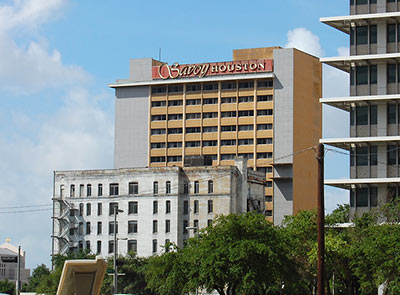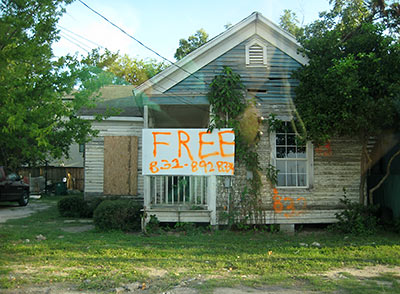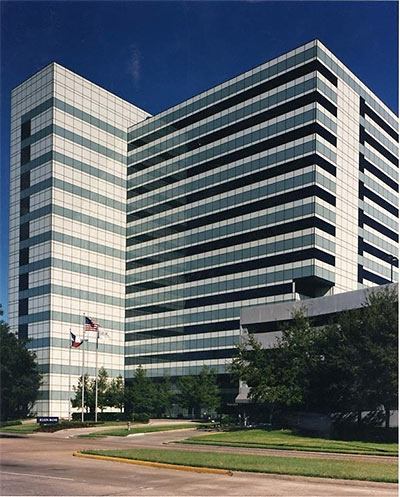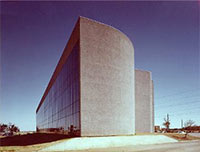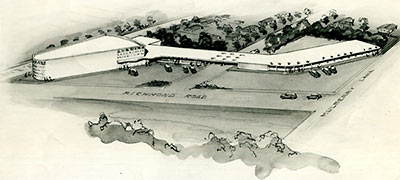
Lauren Meyers, archivist of would-be Houston, digs up an earlier plan for a building at 4500 Bissonnet, on the corner of Mulberry St. in Bellaire. That’s the vacant property long in the possession of legendarily delinquent Wilshire Village landlord Jay H. Cohen, where Matt Dilick, the man who now apparently controls it, is planning to build a 2ish-story stucco mild-West meets retail-Tuscan strip center and sell off the rest of the land.
Back in 1946, Cohen’s father, who had developed the Wilshire Village Apartments on West Alabama and Dunlavy 6 years earlier, planned a 122-home subdivision on the 30-acre strip between Avenue A (now Newcastle St.) and Mulberry St. with a partner. And at the southern end of the property, facing Richmond Rd. (now Bissonnet St.), a sweeping, low-slung modern structure spanning Howard St.: the Mulberry Manor Community Center, designed by Houston architects Lloyd & Morgan.
Meyers quotes a Houston Chronicle report from September 1, 1946:


